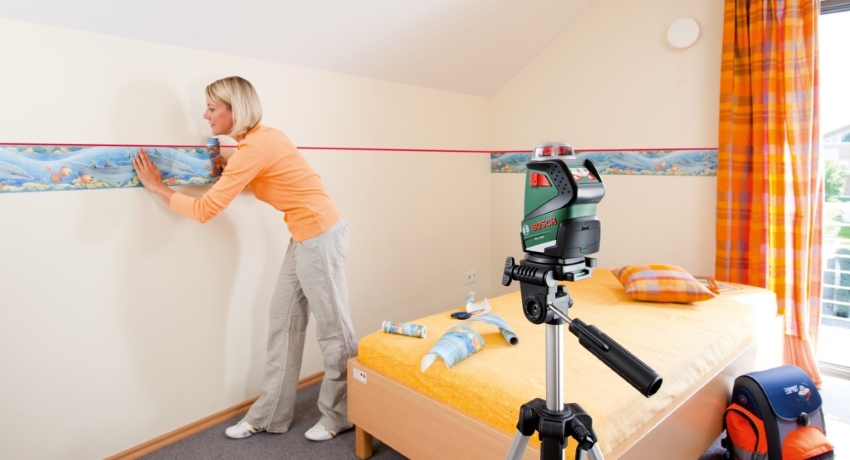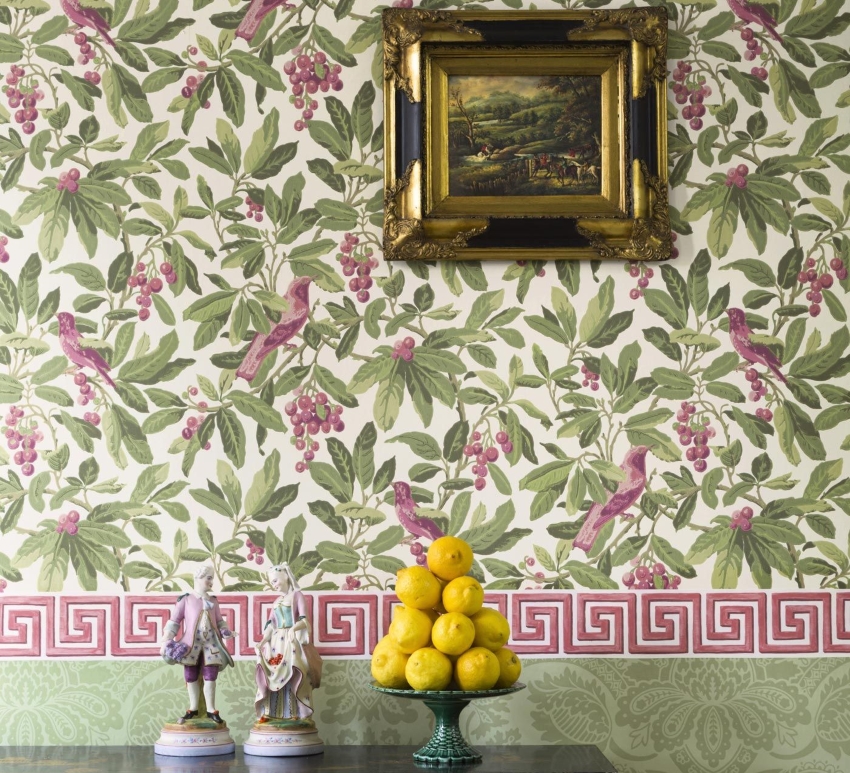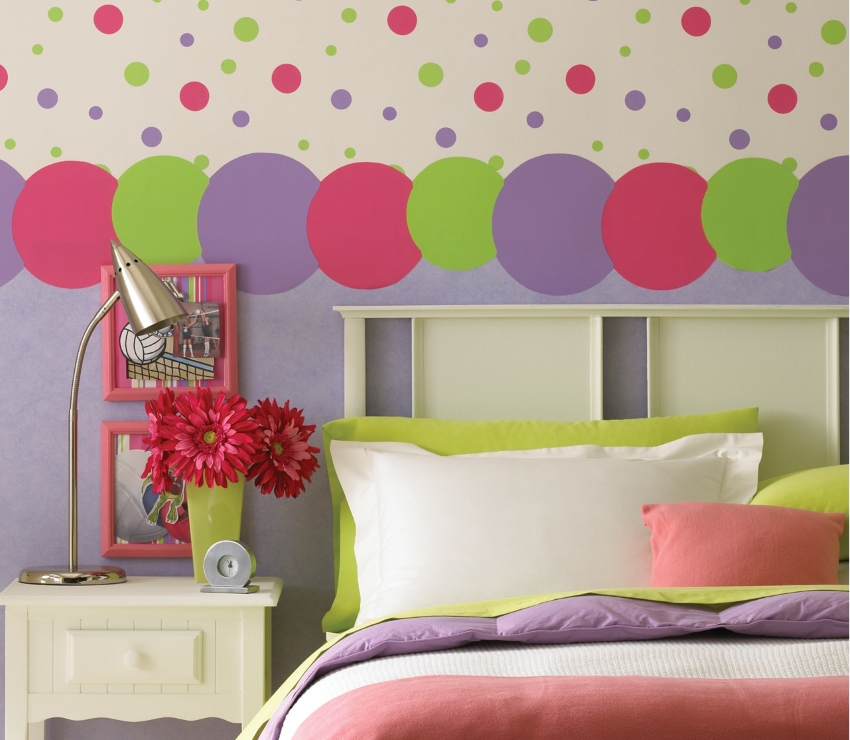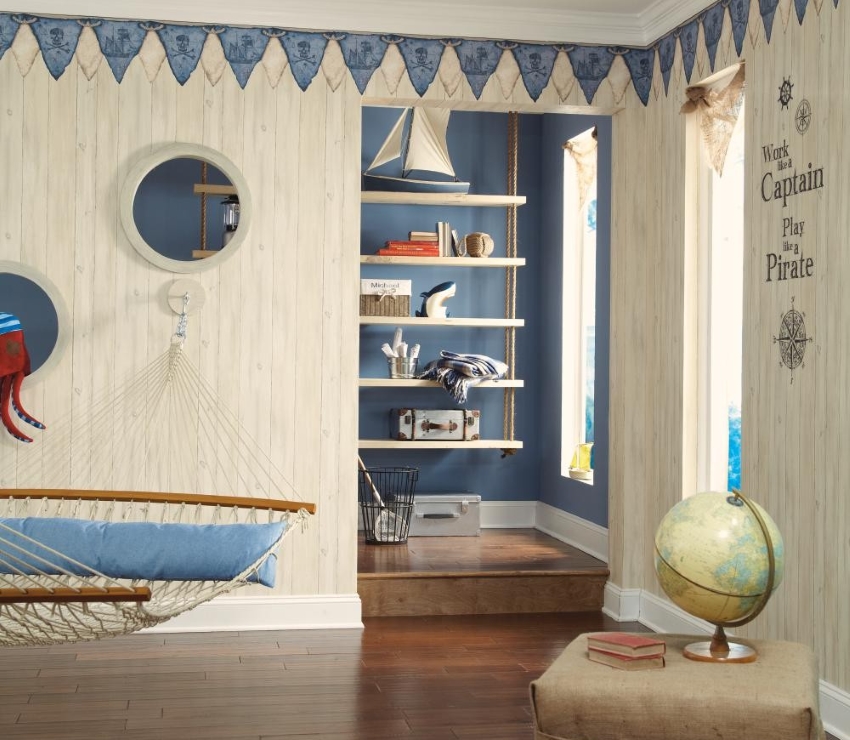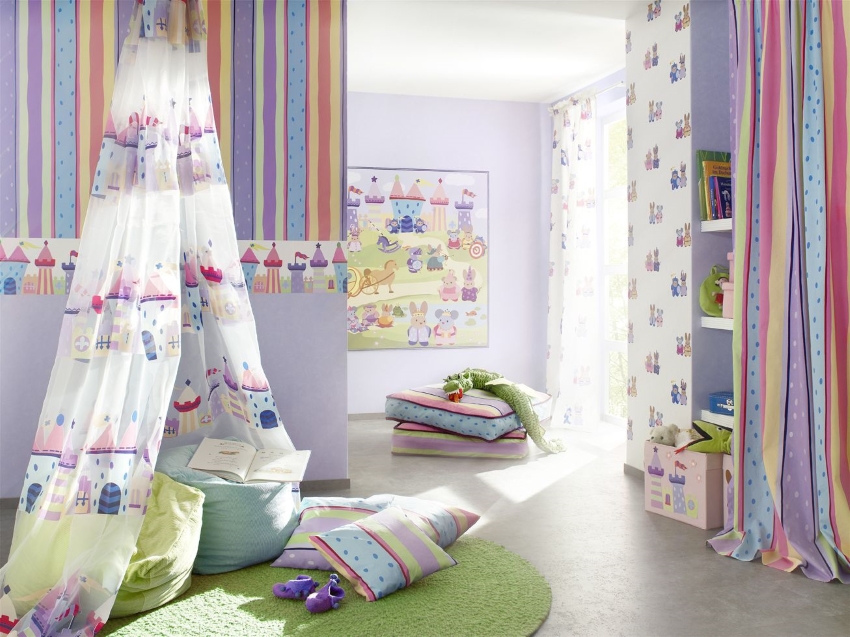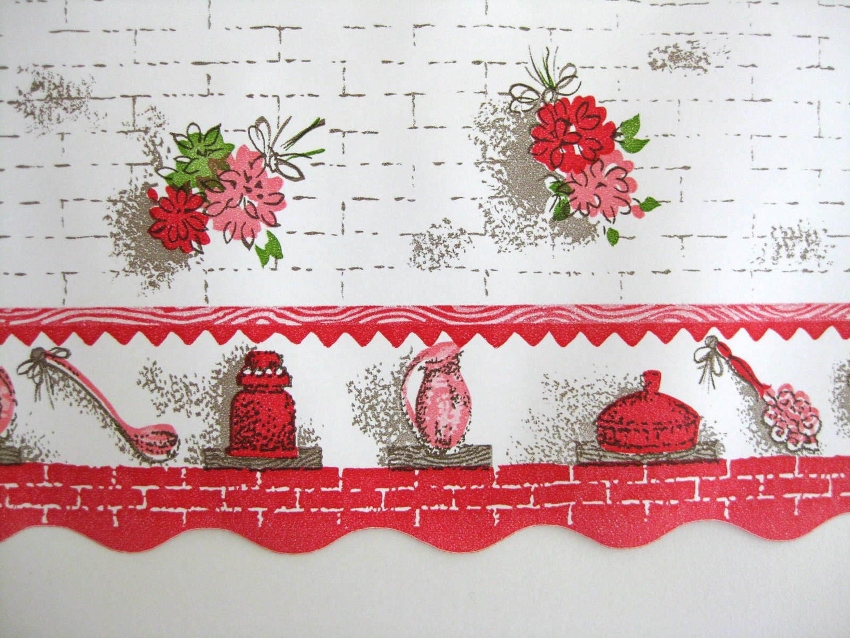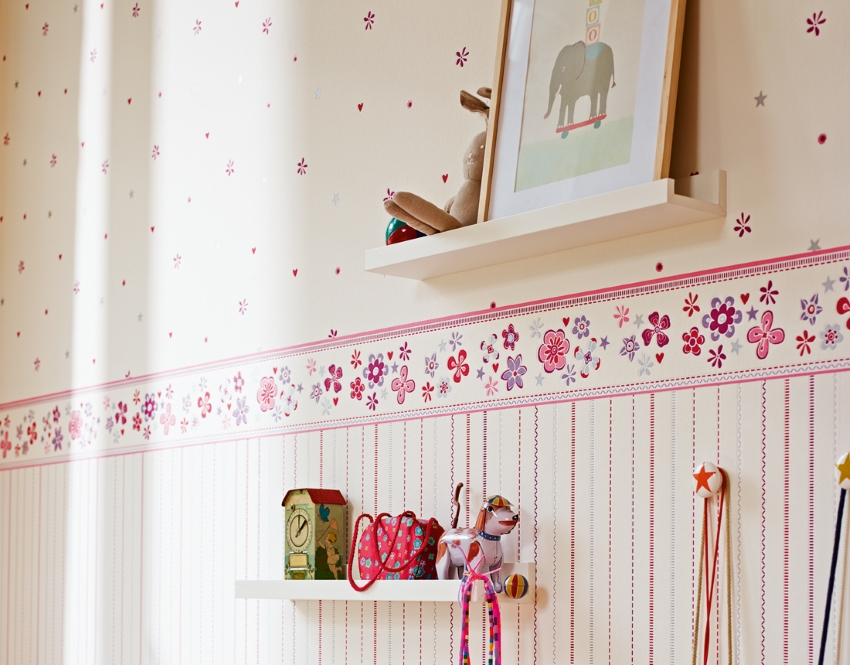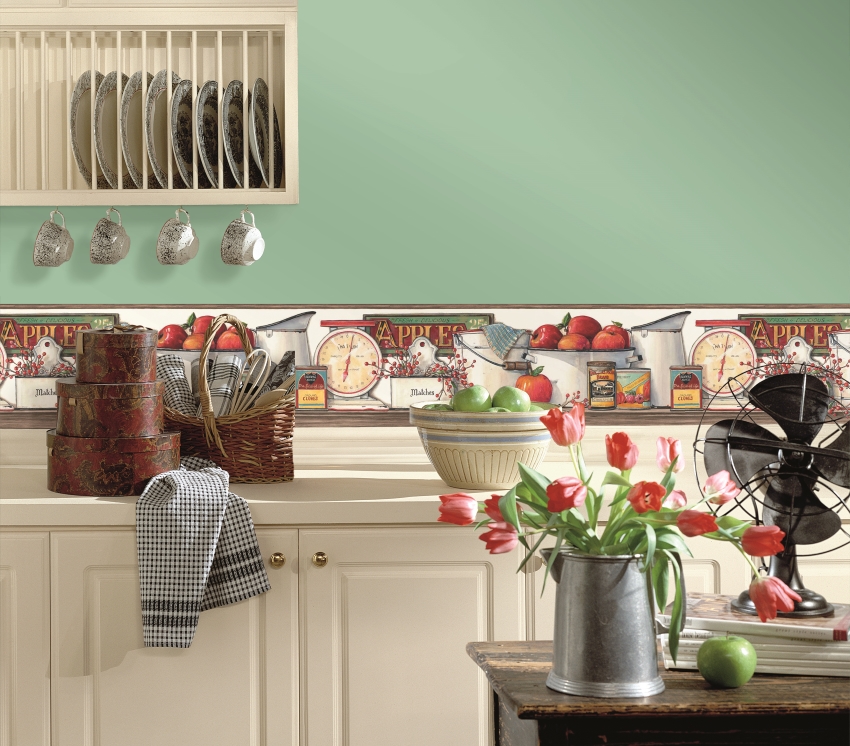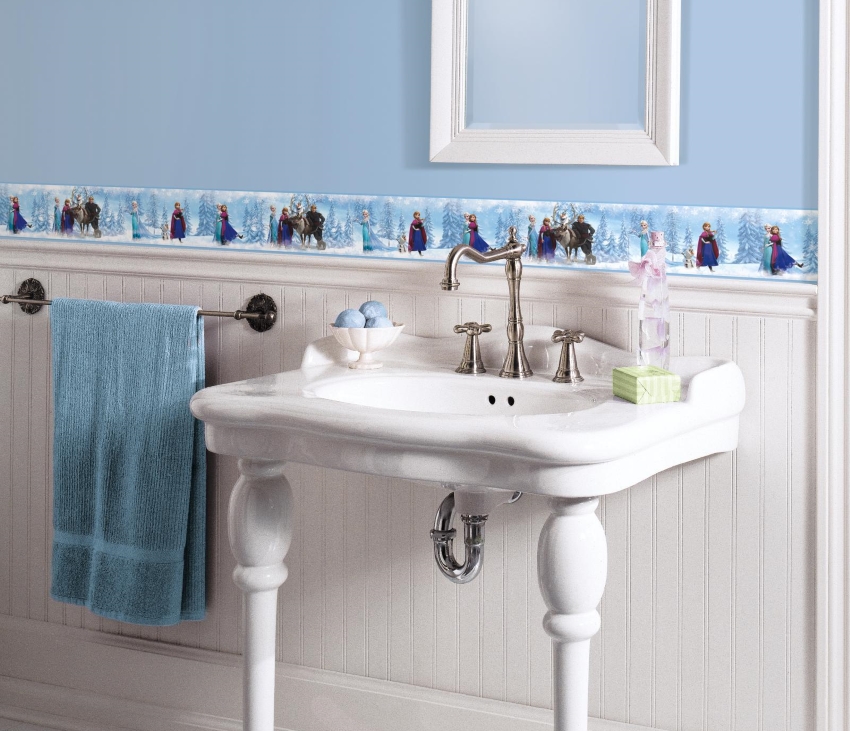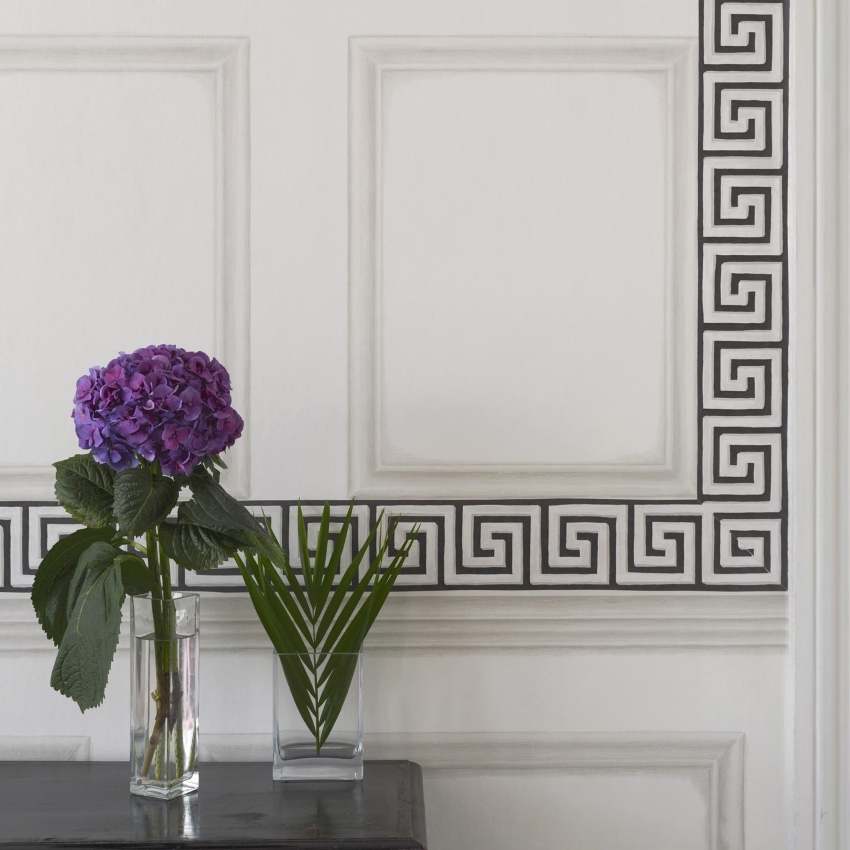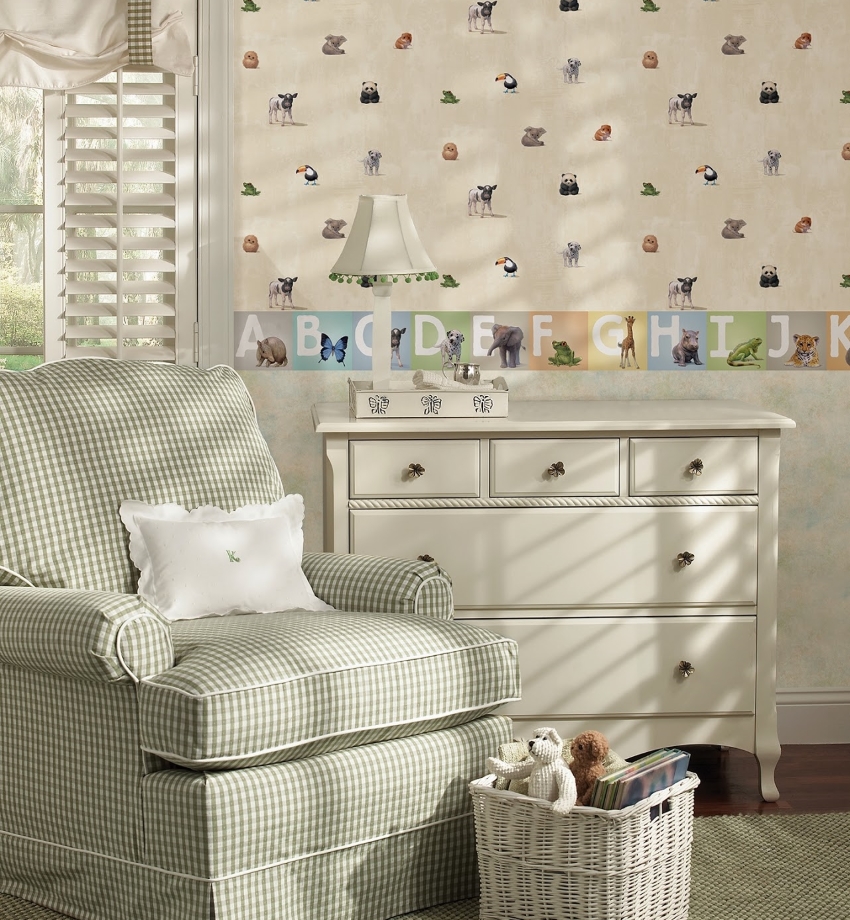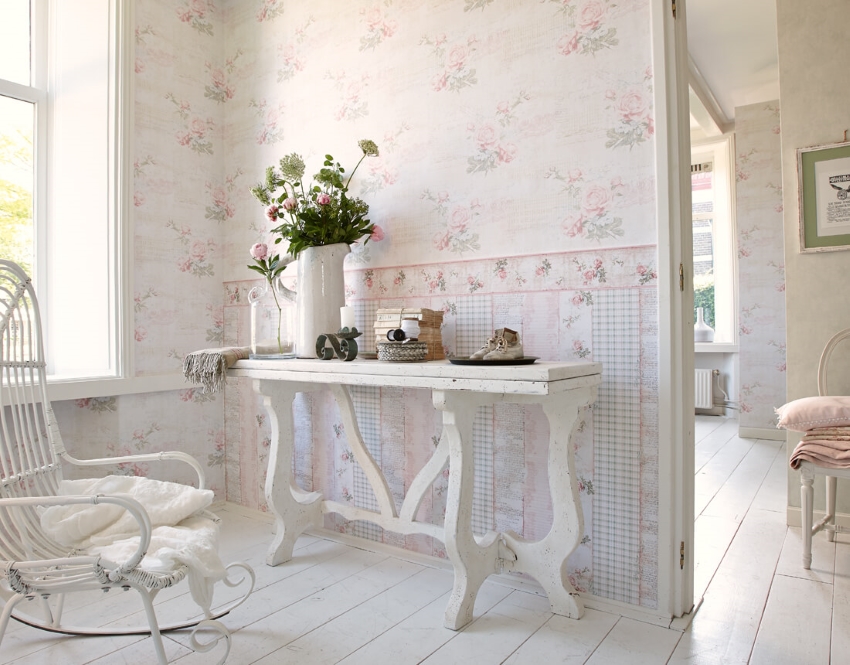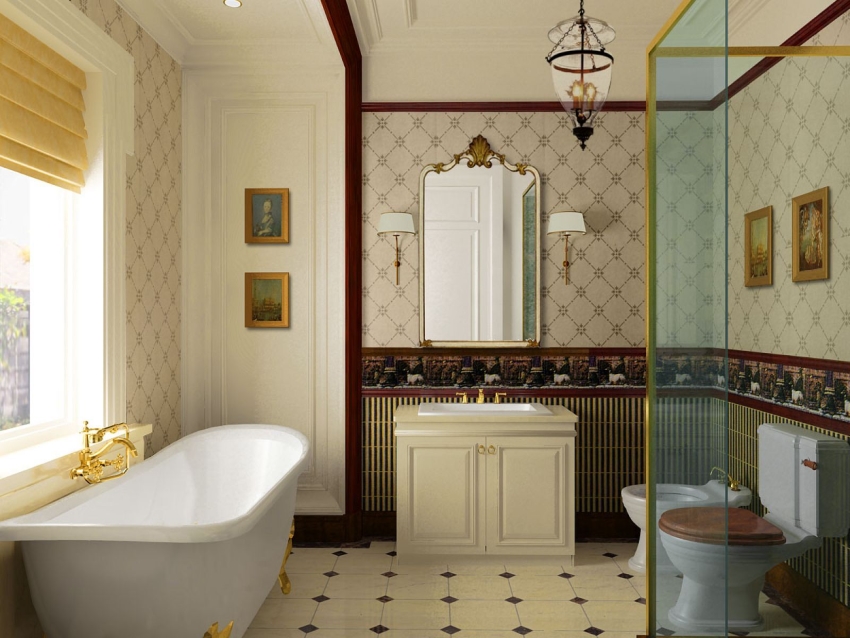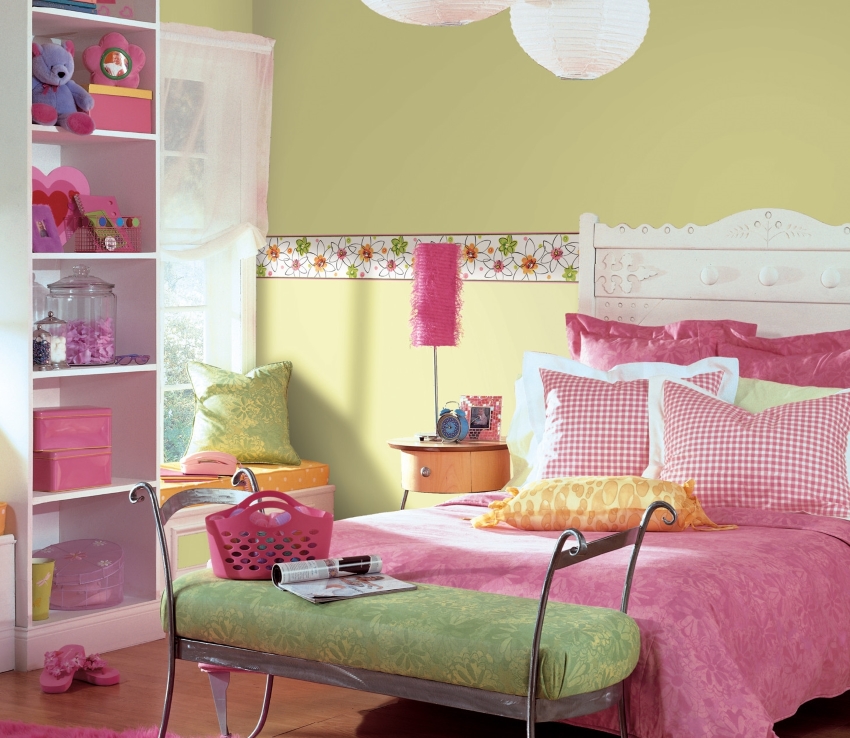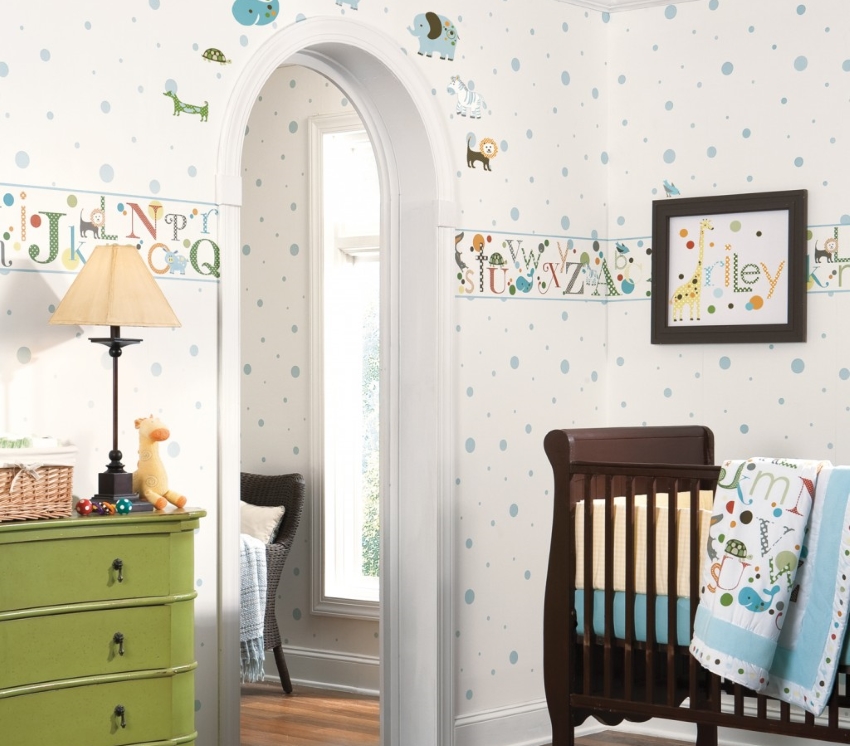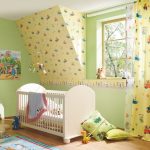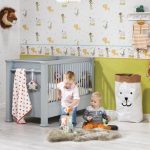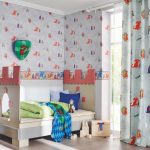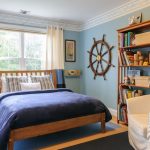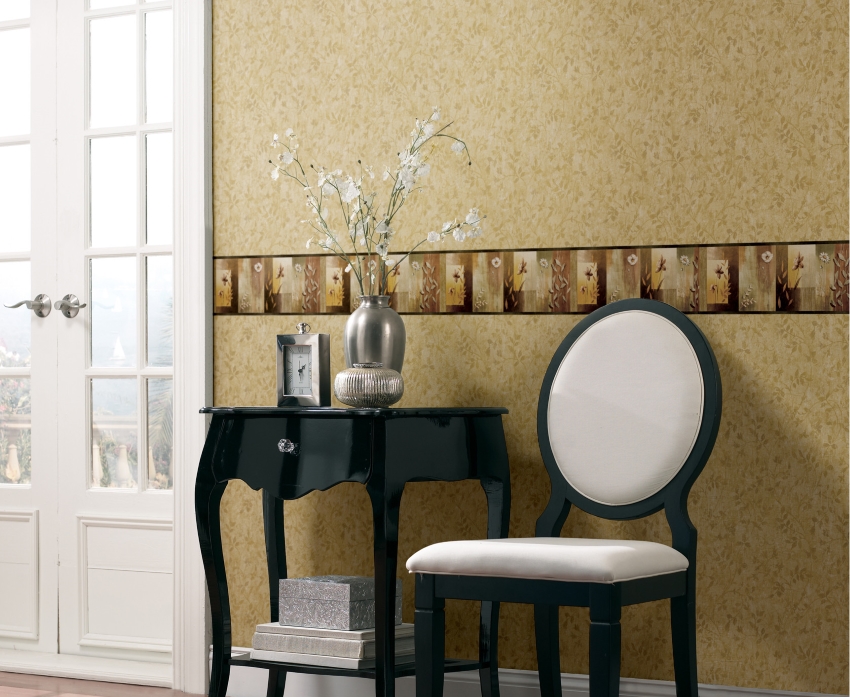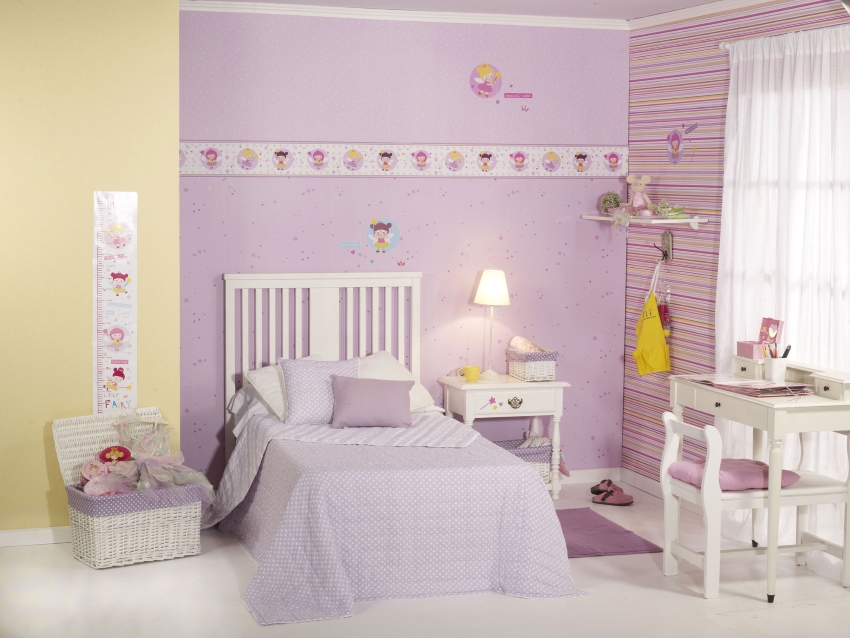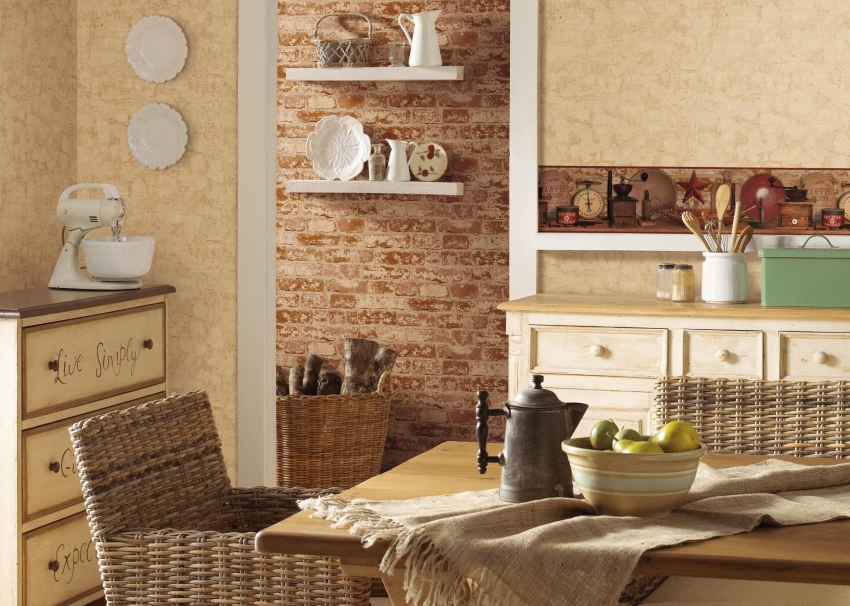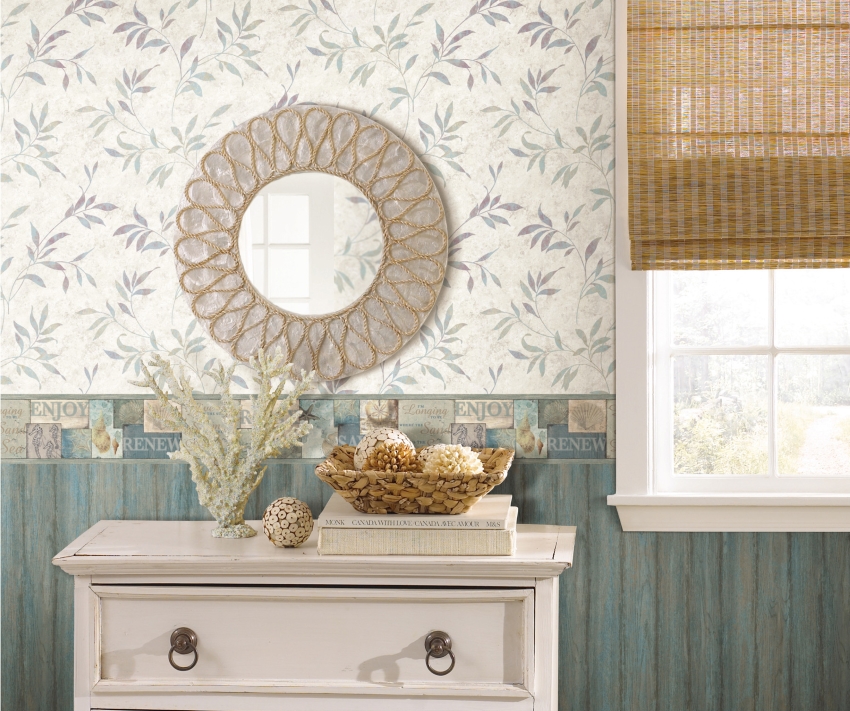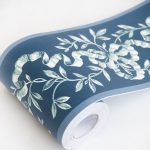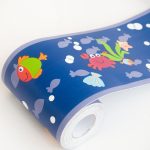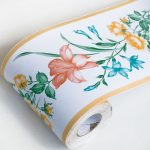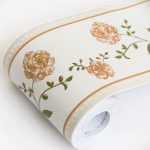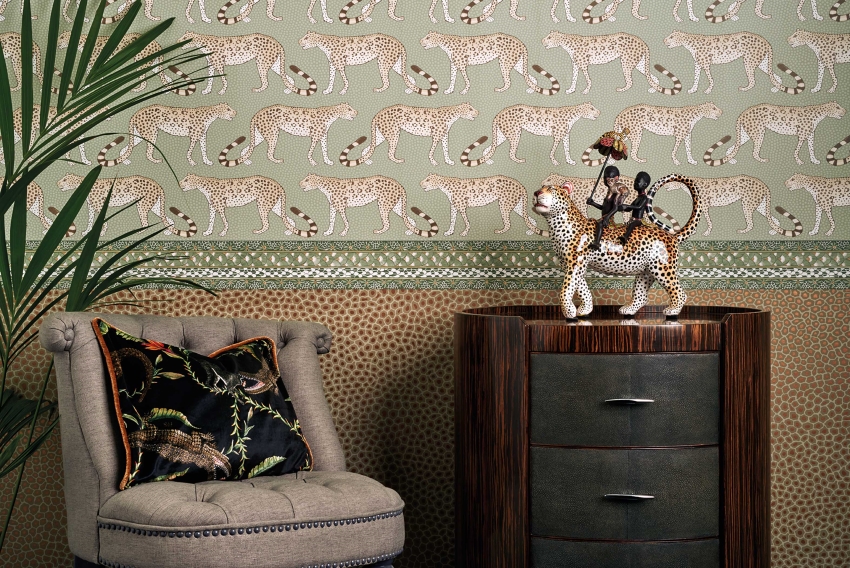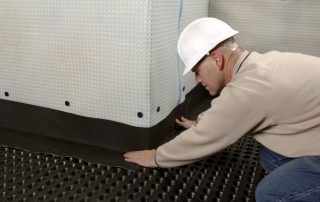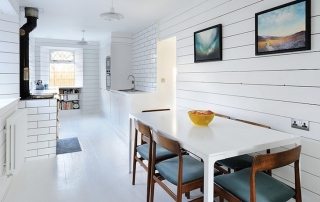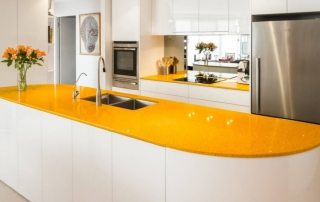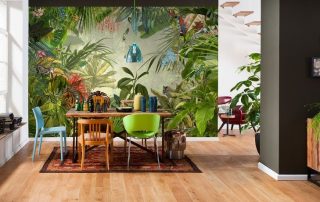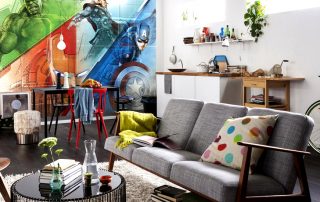A border for wallpaper (or a frieze, edging, edging, border tape) is a strip of small width made of various materials, which is glued over the wallpaper or in places where it is interfaced with other materials. Choosing the right edging is not that difficult. This article describes in detail what you need to consider and what nuances you should pay attention to before buying a border for wallpaper.
Content
Combination options for wallpaper and decorative borders
Often, when buying wallpaper, in addition to the main finishing material, it is proposed to purchase such a decorative element as borders. This product allows you to complement the appearance of the room, highlight significant design details, adjust the visual size of the interior space, hide finishing errors, set boundaries at the junctions with other materials.
Almost any specialty wallpaper store has border tape catalogs. The buyer can pick it up independently from the offered assortment. However, many manufacturers greatly simplify the selection task by providing one or more border options with the wallpaper model.
As a rule, the manufacturer offers two options for combination: by color or by pattern. For example, light-colored green wallpaper with floral ornaments goes well with a white or dark green border with or without the same pattern. In the case of a monochromatic coating, you should opt for a frieze of a similar shade with a print. This addition will enrich the design of the room and make it more sophisticated and attractive.
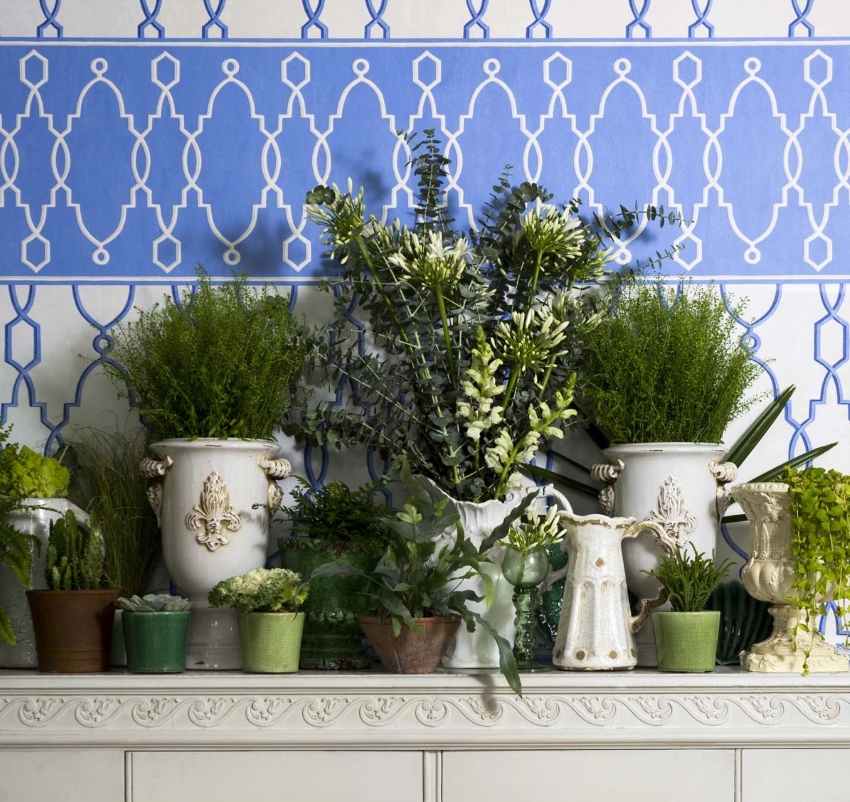
It is important to choose a border that will be in harmony with wallpaper in the hall
Helpful advice! In one collection you can find wallpaper and border tape with different patterns. This combination may not look very good in a small room, oversaturated the appearance of the walls and attracting too much attention to them.
Another option from manufacturers is wallpaper and borders with the same image. For example, the former are decorated with large geometric shapes, and the edging is identical in color and shape, but in smaller sizes. It should also be taken into account that the wall covering should be combined not only with the frieze, but also with other design elements.
With regard to the choice of colors, it must be said separately that a very variegated tape is appropriate only in rooms where the emphasis is on the walls. Moreover, it is not even planned to hang cabinets and other furniture items. However, there is one type of room where the use of bright colors is justified - a nursery.
When a child reaches a conscious age, caring parents often want to paste over his room with wallpaper of the theme that is of interest to him at the moment. This is a major mistake, since the hobbies of a young child usually change very quickly. It is much more expedient to choose a border tape "according to your interests". It will be much easier, cheaper and faster to replace it than to completely re-glue the entire coating in the nursery.
The walls themselves are executed in a neutral positive color. It is worth remembering that too bright and defiant a room can cause anxiety in children.
The choice of material for the execution of the border tape for wallpaper
There are several options for making a decorative frieze.
Paper border for wallpaper... This option is susceptible to ultraviolet rays, pigment fading, and mechanical damage during cleaning. Such a frame can be used in renovation if relatively frequent changes in the interior of the room are foreseen. The main advantage is the ease of pasting and removing. All this should be taken into account before buying a paper border for wallpaper.
Vinyl framing... It is more practical, durable, durable, less prone to fading, easy to clean with wet cleaning. Vinyl tape works well for hallways, kitchens, bathrooms and other places with high pollution.
Acrylic edging... It includes all the advantages of vinyl, but has a lower cost due to the use of an acrylic emulsion in it.
Textile edge... It has a two-layer structure of paper and fabric, resulting in a high density and strength of the coating.
How to properly position the wallpaper border on the wall
It should be noted right away that the edging is never glued to the center of the wall. Otherwise, visually, the room becomes lower. The ideal location is 1/3 of the height from the floor. In this case, the strip becomes the interface between different types of wallpaper. One of the classic examples of the combination is "striped wallpaper - edging - patterned wallpaper". The choice can be made in favor of plain wallpaper, while the lighter ones are glued at the top, and the dark ones at the bottom.
The above-described option for the arrangement of the framing is especially relevant when pasting the kitchen. The main factor here is practicality. Often, the more expensive coating is glued to the top of the wall, and special washable wallpaper and vinyl or acrylic edging cover the work area.
The most common arrangement of a decorative border for wallpaper is under the ceiling. At the same time, it partially replaces the ceiling plinth. It must be borne in mind that it is recommended to choose the pasting of the frieze at the very top of the wall only for large, spacious rooms. This emphasizes the beauty of the ceiling, makes the room more comfortable and cozy, and adjusts its visual dimensions.
Helpful advice! ABOUTwallpaper edging can be glued vertically. This allows you to visually highlight a specific section of the wall or functional area. You can frame doorways, mirrors, furniture, etc.
Very rarely, the border tape for wallpaper is located at the bottom of the floor. This technique can be used if an error was made when measuring the height of the wall and the wallpaper after cutting turned out to be short.There are also times when a poor-quality material shrinks when it dries.
Related article:
Wallpaper for walls: a catalog of photos of current and stylish options
Types of wallpaper. How to choose wallpaper for apartment rooms: living room, bedroom, nursery. Wallpaper for walls: catalog of photos and prices for various types of wallpaper.
Also, the tape is glued to the ceiling and, like a mirror image, immediately below it on the walls. This arrangement visually adjusts the size of the room and its appearance.
Tips for preparing and applying wallpaper edging
When glued, the wallpaper absorbs moisture and becomes more susceptible to mechanical stress and dirt. Therefore, you should let them dry well and only then proceed to applying edging for wallpaper... The drier the surface, the better the adhesion of the two materials after application.
Border glue polymerizes (dries) quite quickly. Therefore, in the absence of much experience, the pasting process should be divided into stages. This avoids situations where the plastered edging has dried out and become unusable. It is also worth making sure in advance that you have all the necessary tools.
Some wallpapers have a pattern with horizontal guides to guide you. The lack of parallelism between the framing and the main wall pattern can be very noticeable and negatively affect the visual perception of the design.
When cutting, the pieces should be made a little longer, which will allow you to match the images. This is true for patterned borders.
It is necessary to carefully check the surface of the walls on which you plan to place the tape. Any irregularities will sooner or later appear due to the delicate material of the performance. It is necessary to cover up all irregularities, cracks, remove paint or glue residues.
When using self-adhesive wallpaper edging, do not rely entirely on its quality. Over time, it can start to fall off. Therefore, it is much more advisable to additionally lubricate the surface with glue when placing it than to solve the problems that have arisen in the future.
Sometimes the wallpaper border is glued end-to-end with the base coat. This is true for varieties with a developed or high relief (two-layer wallpaper with embossing or with an additional layer of foamed vinyl). In this case, ordinary wallpaper glue is used.
Necessary tools for applying a curb to a wall
The following tools are required to glue the frieze.
Level... It is very important to observe a strictly horizontal arrangement of the edging, which allows you to ideally combine the border around the entire perimeter of the room and not spoil the appearance of the interior.
Smoothing roller... Serves to expel bubbles and excess glue. This tool can be replaced with a plastic spatula or soft sponge. However, the roller has an advantage: the likelihood of displacement when smoothing the border strip for wallpaper is minimal.
Cutting knife... It is recommended to use a stationery knife and a ruler, which allows you to more accurately cut the tape along the marked lines. It will also be needed when combining patterns and cutting off excess.
Brush... The surface on which the frieze is glued must be as clean as possible. A soft brush will help get rid of dust just before pasting.
Sponge or absorbent cloth... It is needed to remove excess glue from the wall. The fabric should not be fluffy. It is best to use natural white linen or cotton fabric so that the cloth dye does not smear the coating when wet.
Glue roller... Can be replaced with a regular paint brush. However, it should be borne in mind that when pasting, the pile can cause a lot of inconvenience and slow down the work. If one person is engaged in pasting, it will be quite difficult for him to simultaneously hold the plastered frieze and at the same time get rid of the adhered debris.
Wallpaper glue... When choosing an adhesive, it makes sense to additionally consult with the seller at the time of purchase, indicating the material of the frieze and on which surface it should be applied.
Stepladder or table... If you plan to place the curb on the walls in the upper part, then it will require ladder or a sturdy table that can support a person's weight. It is necessary to remove in advance all objects that interfere with movement along the perimeter of the room. It will also reduce the chance of additional injury from a fall.
Desktop... Needed to place the tape when spreading. The work surface must be thoroughly cleaned of dirt and can be covered with plastic wrap to avoid any contamination during work.
The process of gluing a decorative border for wallpaper
Before proceeding with the basic operations, make sure once again that you have all the necessary tools and materials. Remove all unnecessary items from the room or protect them from accidental pollution, conveniently position the work surface.
Glue preparation... It is highly recommended to carefully study the manufacturer's instructions, as some adhesive mixtures are diluted outside the box. According to general rules, the dry mixture is placed in a container with water and stirred slowly. The subsequent infusion process takes about 20 minutes. After this time, the glue is re-mixed until a homogeneous mass without lumps is obtained.
In the case of using glue mixed with acrylic mass, mixing with water is not required. Such material can be used immediately. It should be noted that thanks to the acrylic base, an ideal adhesion to the surface is provided.
Note! Incorrect preparation of the glue will subsequently affect the decorative features of the wallpaper edging. Therefore, you should take this stage responsibly. Otherwise, the tape will have to be re-glued.
Markup... In order for the edging to be glued exactly, you need to mark in advance with a simple pencil its location. This will greatly speed up and simplify the subsequent work and make its result ideal. For marking, a level and a long ruler (or other flat guide for drawing) are used. The greater the distance between two points when drawing lines, the less chance of deviations.
An interesting approach that dramatically speeds up the line drawing process is to use a line guide. In this case, you can mark an arbitrarily long wall in one step. However, such work requires at least three people: two to maintain the guideline and one to sketch.
Cutting tape... This stage is very simple, but it requires special care. After the surface is marked out, measurements are taken and pieces of border tape are cut for wallpaper. If the length is chosen with a small margin, the process of aligning the joints can be greatly simplified. Surplus can be neatly trimmed immediately after placement on the wall.
Glue application... The glue is applied to the border tape with a brush or roller. The oiled edging is left on for 5-10 minutes. This time can be used to brush the surface of the wall again and remove any dust that has settled.
Applying edging... The wallpaper border is neatly positioned on the wall according to the markings made in advance. When gluing in corners, the end of the tape should grip the adjacent wall. The next strip is glued with an overlap, the allowance is 5-10 mm. This avoids gaps. You should not make sudden movements and strong bends. Otherwise, the curb may break.
After application, using a special roller (or a clean cloth), air bubbles and excess glue are expelled from under the material. Then the excess glue is carefully removed with a cloth or sponge. After the entire perimeter of the room has been processed, the border glued to the wall should dry well. Drying time depends on the selected adhesive, but is often up to 24 hours.
Wallpaper border around the perimeter of openings
Highlighting door or window openings with decorative tape will become an effective decoration and addition to the overall design of the room. The biggest challenge here is that the pieces of tape need to be joined at a 45 degree angle.
To obtain a perfect seam, it is necessary to overlap the vertical and horizontal strips, one on top of the other. Immediately after that, apply a ruler along the line of the future joint (diagonally) and draw with a sharp knife, cutting both layers. Then bend the edges and remove the trim. After that, return the parts of the joint to their original position and carefully smooth out, while removing excess glue.
Selecting and applying a border to the wall is a simple task that can be done even by the one who does it for the first time. However, it is worth remembering that what in theory seems to be a new, original idea - in practice, it can give a far from the expected result. Therefore, it makes sense, if not to be guided, then at least to take into account the well-known rules and recommendations of specialists.
